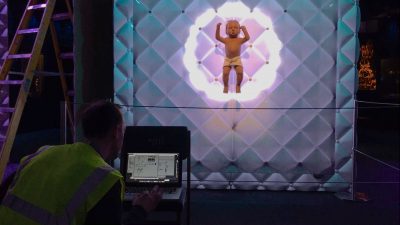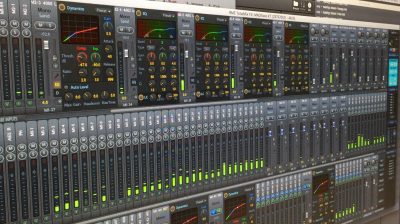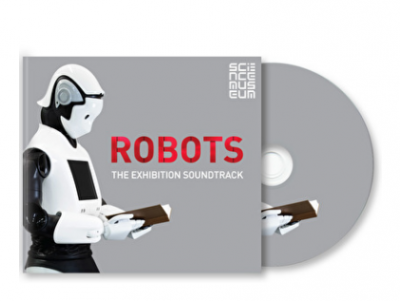When Coda to Coda were commissioned to create the soundscape to the Robots exhibition at the Science Museum it seemed like the perfect opportunity to think about the relationship between music and machines.
Back to basics…
Much of what we think of as ‘musical’ nowadays is the result of the feedback between musicians and instrument makers. To take an obvious example, the piano is an embodiment of both a mathematical and physical solution to the concept of musical harmony. Without it and the many scholars and craftsmen who evolved both the tuning and mechanism of the piano over centuries, much of what we now take for granted in Western music would not exist.
The piano’s mechanism also invites us to consider the possibility that something other than human fingers might also play it. Through this contemplation of the mechanics and possible mechanisation of musical instruments, the question ultimately arises as to why music is still almost exclusively made by humans for other humans. This was not a question that was lost on the clockwork virtuosi of the 17th century. A notable example are Jacques de Vaucanson’s musical robots, the first of which was a life-sized flautist who could play 12 melodies and are perhaps the most celebrated. The capacities of these clockwork machines shocked and amazed their audiences and set us on the road of ever more complex simulations of our own human attributes.
Fast forward to the 21st century…
We live in an time where music making is more mechanised than ever. To pick one example among a vast number, we are all accustomed to hearing the voices of singers corrected by a computer so as to have perfect pitch. Indeed Cher’s hit song ‘Believe’ from 1998, through its extreme mechanical warbling, might perhaps be said to have consolidated the idea that popular music’s relationship with technology is symbiotic.
The production of sound and music via mechanical means therefore describes unique and diverse narratives in the annals of technologisation. This is something we wanted to try to both explore and impart to those visiting Robots. For this reason we conceived of the soundscape for the whole exhibition as a mechanism in its own right – a musical robot that would run behind the scenes and animate the spaces with sound and music that not only illustrated the sound worlds of the eras the exhibition documents, but also the mechanical processes and constructs that underscore them.
Thematically, the exhibition moves from the dawn of clockwork mechanisms through the mechanical repetition and sequencing of the industrial revolution to the embedded synthesis and logic of electrical circuits up to the evolution of general computation and embodied intelligence. The soundscape not only attempts to describe these themes sonically but also to enact compositionally.


In the beginning… Marvel
After an opening preface of the automaton baby, the exhibition soundscape begins with ‘Marvel’; a world of untempered, microtonal melodies and numerous polyrhythmic clockwork pulses which are gradually coalesced into something that gives the illusion of music. Disparate rhythms begin to weave together, out of dissonance harmony is articulated. At its peak the soundscape sounds less like a set of mechanical elements and more like a composition, allowing us to perhaps glimpse in musical terms what the makers of the clockwork automata on display revelled in creating as physical objects.
Dream…
A similar methodology is applied throughout the exhibition. Each era of the soundscape is composed and programmed in such a way to foreground some of the most pertinent technological developments of the time and their repercussions for sound and music. In the ‘Dream’ section of the exhibition we are introduced to radio and electronics and their impact on sound and music. We focus not only on the impact in terms of broadcasting and sound synthesis, but also ways in which ‘tuning’ in and out of signals and the harnessing of random numbers as elements to be used in musical composition effect our perception of what might constitute music.

Imagine…
As we enter the ‘Imagine’ section of the exhibition and the present day and beyond, our focus shifts to digital technologies, their amorphousness and ability for mimicry and extrapolation. An array of 18 speakers immerses visitors in the current and imagined sonic landscape that issues from the internet of things that increasingly surrounds us; a crowd of human synthesised voices, a chorus of synthesised birds and a habitat of phrases from the likes of 3D printers and digital communications made audible.
At the end of the exhibition and in contemplation of ‘iCub’ a humanoid robot about the height of a 5 year old designed for research into cognition and learning development. We attempt, metaphorically, to return to the theme of ‘Marvel’ by deconstructing an algorithmically generated chorale in the style of Bach via the techniques of contemporary electronic music. In this way we aim to make reference both to the sense in which research in music A.I. predominantly relies on a constrained set of musical examples on which to assess its output and conversely how many experimental music producers continue to develop the eclecticism and meta-narratives of musical expression using the same technology.
Robots: The Exhibition Soundtrack is available from the Science Museum Shop and Online Store
